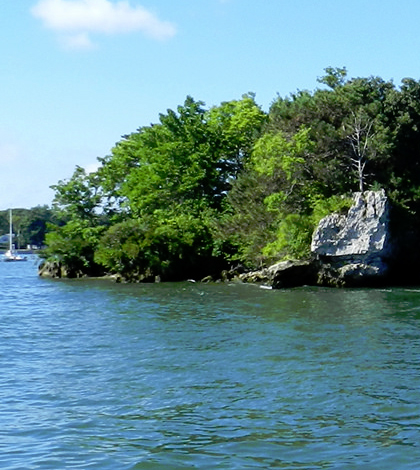Ohio Sea Grant Research Roundup

Lake Erie’s Gibraltar Island, home to Ohio State University’s Stone Laboratory. (Credit: Nate Christopher / Fondriest Environmental)
In mid August, a few of our crew at Fondriest Environmental got the chance to venture to Ohio State University’s Stone Laboratory. We got to spend a few days on Gibraltar Island in Lake Erie learning about a great deal of research underway at Ohio Sea Grant during a meeting of Great Lakes reporters.
Following up on our trip, we published a number of stories covering what stuck out to us as the most newsworthy research. Most of all, the stories we put out hit nicely on our beat. That is, the scientific investigations hit on important topics of the day while either featuring our customers or relying on interesting monitoring gear to get the job done.
Here is a short list to round up our coverage of work involving Ohio Sea Grant and other partnering institutions and universities:
Though we hit on a lot of different investigations, it wasn’t possible for us to cover all of the experts who spoke at the gathering. So we’re giving a few of them a shout-out here.
Tory Gabriel, fisheries outreach coordinator with Ohio Sea Grant, gave us a brief update on the Ohio Sea Grant Extension. Gabriel shared what the extension service is and what its goals are. In addition, he highlighted some recent works, including wetland sampling projects and efforts to fight invasive species. Other programs Gabriel talked about included the Clean Marinas Program, Keeping Cleveland Clean and boat shrink wrap recycling.
We also heard from Glenn Lipscomb, professor of chemical and environmental engineering at University of Toledo, about reverse osmosis systems to remove cyanotoxins. He gave us a top-down description of what reverse osmosis is, how the filters are designed and some of the next steps for getting to a place where we can filter out toxins from home. Fun fact from his talk: Did you know that the world’s largest desalination plant, Sorek, is located in Israel? It can process 150 million-meters-cubed per year of seawater.
Top image: Lake Erie’s Gibraltar Island, home to Ohio State University’s Stone Laboratory. (Credit: Nate Christopher / Fondriest Environmental)





0 comments